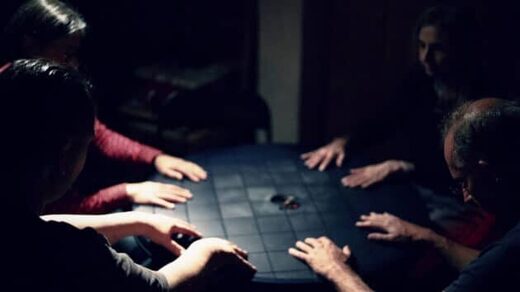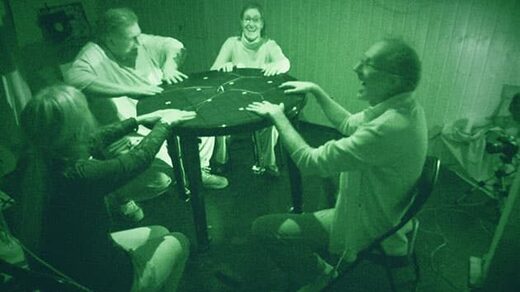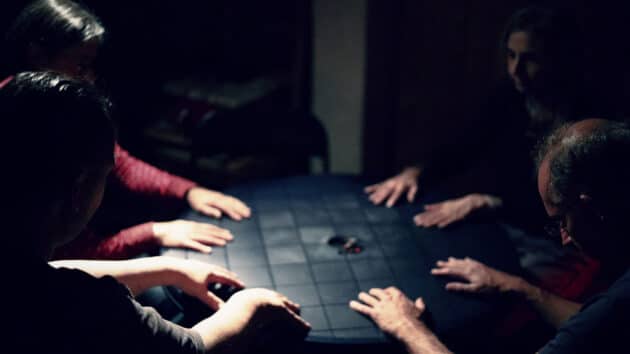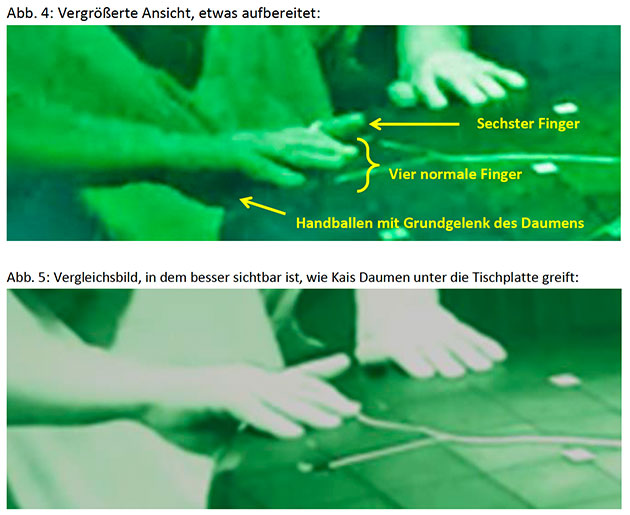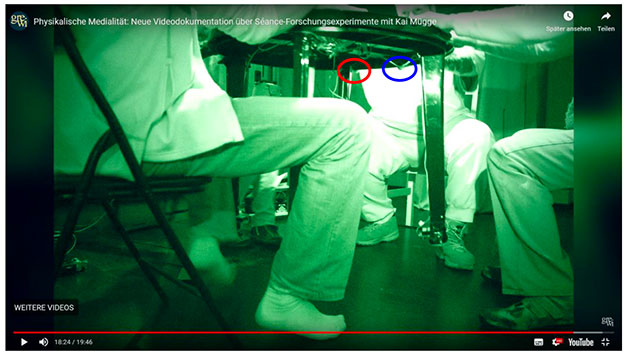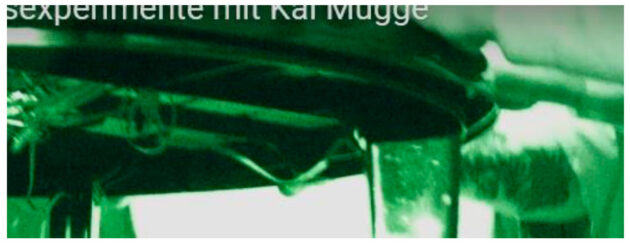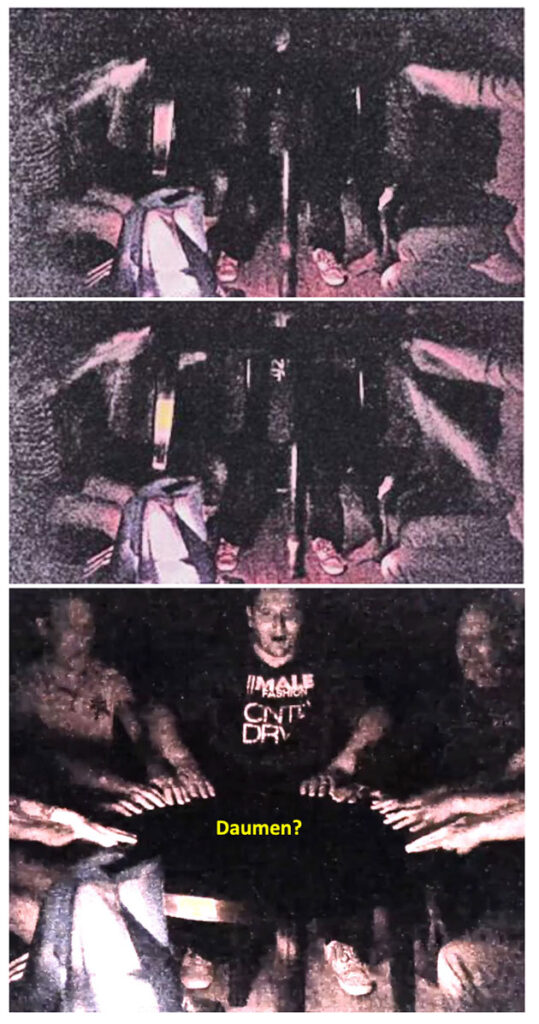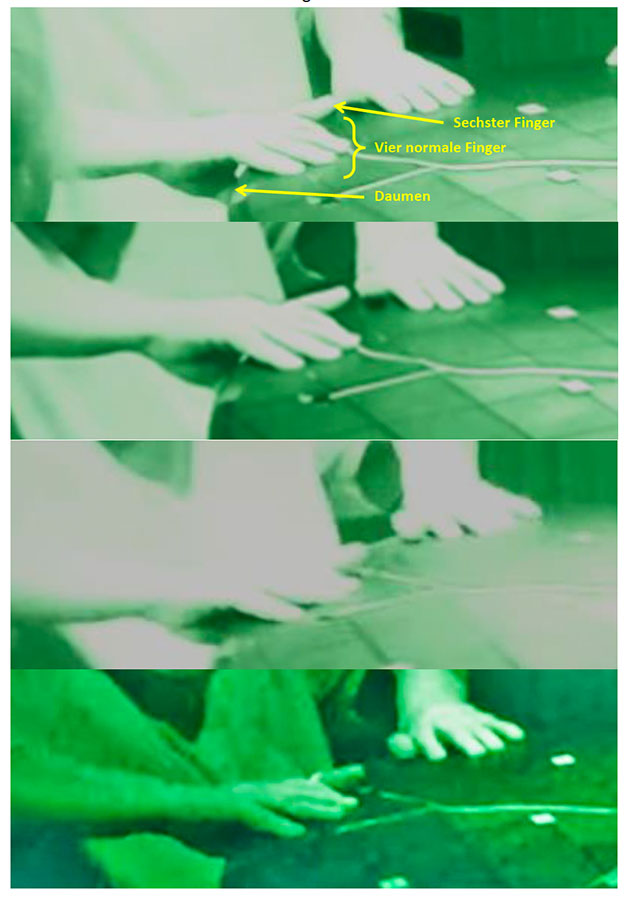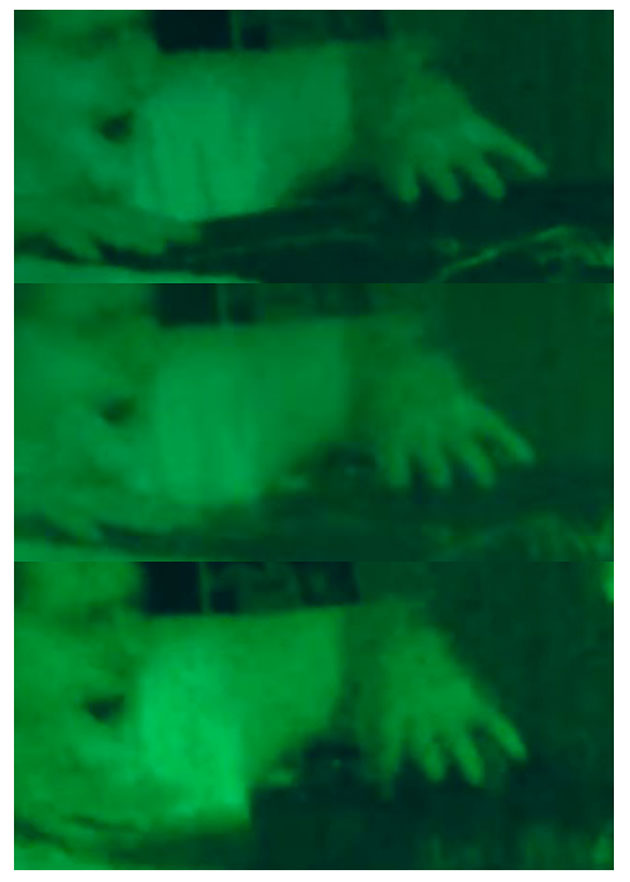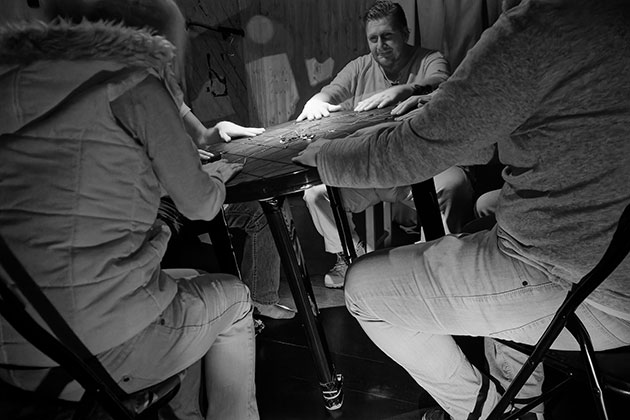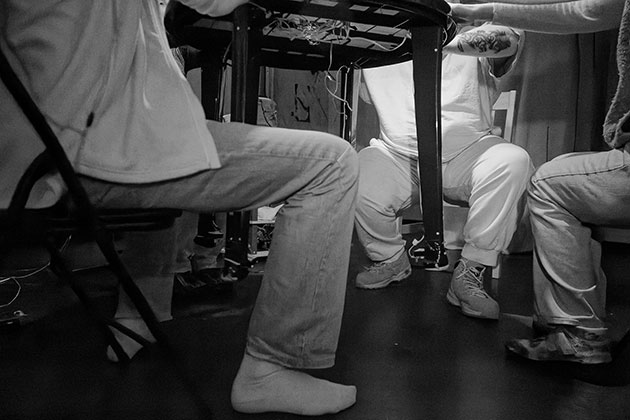In the following video-documentation scientific experiments and protocols are used to capture and document a Phenomena caused by Kai Mügge, who describes himself as a physical medium in spiritistic séances. In the video we can see several levitations of a table. Apart from the shown phenomena in the video, Mügge also brings forth other phenomena such as ectoplasm and things appearing out of nowhere. Dr. Eckhard Kruse, Professor for Applied Computer Science at the Baden-Württemberg Cooperative State University, has set up an elaborate system to test and document the caused phenomena. So, here we go. Do you notice anything?:
On 11. April of this year, a famous german alternative website published an article about it. On 17. of April SOTT responded with the following article [machine translation]:
On 11. April of this year, a famous german alternative website published an article about it. On 17. of April SOTT responded with the following article [machine translation]:
Magic trick? New video documentary about séance experiments with table levitation
Various phenomena have been reported from spiritistic séances for over 150 years. In nine experiments, Dr. Eckhard Kruse, Professor for Applied Computer Science at the Baden-Württemberg Cooperative State University, electronically monitored séances with the medium Kai Mügge and meticulously documented the phenomena that arose. Professor Kruse presents the results of this work for the first time exclusively on Grenzwissenshaft-Aktuell.de.
© E. Kruse / Symbol picture: Tableséance
- This article is an exclusive GreWi guest contribution by Prof. Dr. Eckhard Kruse. The views expressed by the author are his own.
Various phenomena have been reported from spiritistic séances for more than 150 years: objects literally move "as if by magic hands", the ghostly substance, so-called ectoplasm, emerges from the medium and takes on a variety of forms, objects appear as apports out of nowhere, or when the table is moved, a table develops a life of its own under the loosely laid hands of the séance participants or even lifts off the ground completely. Even today there are so-called physical mediums in whose séances such phenomena can be observed. Much of this happens in the dark or under weak red light, and from the point of view of school science it seems clear anyway: it's all just illusion, deception or fraud.
SOTT comment: While such phenomena have likely occurred in the past and present, without using any trickery, and where real paranormal activity is actually taking place (such as table levitation), one should be aware that there are also magicians who fake such phenomena - sometimes with ingenious and sophisticated tricks. Unfortunately, Mr. Kruse (like most researchers in this field) does not seem to have spend at least some time studying magic in the form of magic tricks. Paranormal researchers should have at least basic knowledge in this area and thus a healthy degree of skepticism. In addition, it would be advisable to seek advice from a professional magician to better rule out tricks. It is entirely possible - and often quite easy - for professional magicians (and laymen alike) to fool even professional magicians, let alone the average Joe. And yes, that definitely applies to scientists as well.
So Mr. Kruse should ask himself the legitimate question why Kai Mügge is the only one among the test persons in every "evidence picture" and "evidence video" who puts his two thumbs under the (very light) table every time a "levitation" takes place while one of the legs of the table continuously touches his knee during the levitation action. A few youtube commenters under the video below also noticed these details. Until this obvious and fundamental thumb and knee anomaly is viewed critically, one should assume it is a trick. It's also worth mentioning that magicians/wizards who use tricks also often use psychology to fool the observers.
Nevertheless, the mediums are occasionally willing to allow scientific experiments in their séances in order to provide a deeper insight into the processes. This is how Prof. Dr. Eckhard Kruse, Professor of Applied Computer Science at the Baden-Württemberg Cooperative State University, has been conducting experiments in the séances of various mediums for several years (...GreWi reported). In 2021, an extensive series of experimental séances with Kai Mügge began, supported by the circle leader Julia Mügge and the psychologist Dr. Heike Bauder and at times Dominik Dörrzapf, who helped as a cameraman to document the events.
In order to convey the investigations and results to interested people, the path chosen was to document the procedure, the atmosphere before, during and after the séances and the results on film and to publish them as a series of short documentary videos. The first part, which is hereby published exclusively on Grenzwissenschaft-Aktuell.de as a 20-minute video, is dedicated to the phenomenon of turning the table [and levitating it].
The so-called table turning is based on the Western occult tradition of sitting at a table waiting for signals from spirit beings, e.g. in the form of knocking noises. For control the hands were often placed on the table, and the table repeatedly made surprising movements, even going so far as to lift off completely - phenomena that aroused research interest as early as the 19th century.
SOTT Comment: Yes. But there are also various versions of this phenomenon that are definitely out of the Magic bag of tricks. For example, magicians know many options to "levitate" a table. Which of course does not mean that there are not real phenomena of this kind.
For example, the ideomotor effect (also called the "Carpenter effect" after its founder) is used to explain such movements, which means that such movements can be explained simply by their own, albeit unconscious, muscle movements of the so-called sitters. In addition, of course, various possibilities for targeted tricks and manipulations must also be considered, especially since the phenomena often happen in the dark.
SOTT Comment: Another indication that could enable Mügge to easier convince his guests and audience.
But even after considering a wide variety of conventional explanations, researchers have repeatedly come to the conclusion that they have witnessed real paranormal happenings.
SOTT Comment: Yes. But in many magic tricks observers are also often convinced of the "paranormal" nature of what they see (including professional magicians) when in reality they just see or experience a magic trick.
© E. Kruse / Tischlevitation in Infrared.
A central problem when researching such occult phenomena is that many phenomena do not appear when intervention is carried out using controls, measuring devices or lighting.
SOTT Comment: Indeed, this often seems to be the case in real Phenomena, not just in magic tricks.
Some interpret this as 'proof' that it must all be a scam.
SOTT Comment: Which definitely does not have to be the case.
But there is also other ways, through careful, step-by-step experimental approach, to bring quite remarkable results to light. When examining the table séances with Kai Mügge, such a balancing act turned out to be successful, on the one hand to gain more and more interesting measurement data, but on the other hand to witness strong phenomena. The experiments culminated so far in the documentation of complete table levitations, in which all sitters had their hands visibly resting loosely on top of the table surface, the area under the table and the table legs remained visibly free and the processes were viewed from different perspectives with infrared video, camera and other sensors were recorded.
SOTT Comment: And Mr. Mügge had his two thumbs under the table...
The video documentation shows the sometimes tedious, often emotional way to get there and the diverse ideas of being able to use suitable technology to further and further exclude conventional explanations of manipulation. The main experimental approaches and results are outlined below.
A typical table séance at Kai Mügge takes place largely in the dark, only during short red light phases are checks made, for example of the table position, the hands of the sitter, etc., whereby the particularly impressive complete table levitations are usually only in the dark via the perception of the table movements by one’s own hands is possible.
SOTT Comment: Another indication that Mügge is doing a trick.
At this point, the experiments started in order to obtain further objective, measurable information about what was happening.
SOTT Comment: The rest of the article can be found on Grenzwissenschaft-Aktuell.
Last edited:

